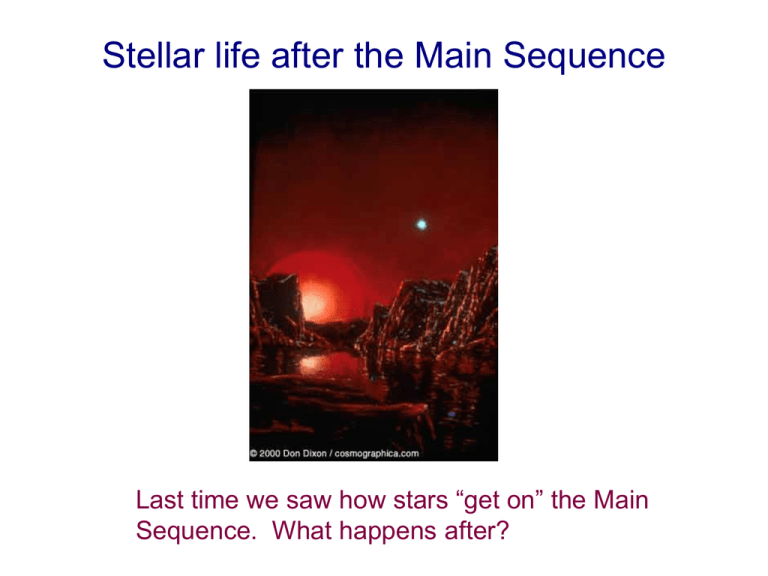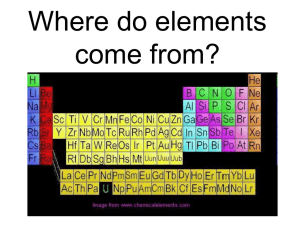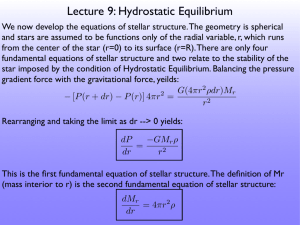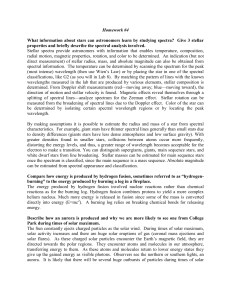19: 08 October: Stellar life after the Main Sequence
advertisement

Stellar life after the Main Sequence Last time we saw how stars “get on” the Main Sequence. What happens after? “there is great unity in physics…” The application of nuclear fusion reactions to the energy problem. Get same 1E+07 increase in Joules/kg, no CO2 emission The problem: how to hold in a 20 million degree Kelvin gas. The Sun does it with the weight of overlying layers Controlled fusion will (attempt to) do it with strong magnetic fields. The next step in controlled fusion: ITER, Cardache, France • An international collaboration • Plasma will turn on in 2019 • Should generate of order 500 MegaWatts of fusion power • Advantages of fusion (the power of the Sun): water for fuel, no long-lived radioactive waste, no CO2 emission http://www.iter.org Next topic: Dead Stars The end products of stellar evolution: see Chapter 19 of book An easy way to see why a Main Sequence star undergoes a “crisis” Hydrogen mass fraction in core at start: 71%, now: 34% Nuclear fusion changes hydrogen nuclei to helium. Helium is the “ash” of, not the fuel for, the proton-proton cycle My summary of stellar evolution • Evolved stars have fused (used up) the hydrogen in their cores • The centers of these stars consist of burned out, incredibly dense cores, surrounded by shells where nuclear reactions are occurring • The outer parts of the stars get big, red, and bloated • Evolved stars move around in the upper part of the HR diagram • In an evolved star, its external appearance gives little indication of its internal structure • Mass is destiny Why mass is destiny: the more mass, the more fuel, but more massive stars use up their fuel at much higher rates Main Sequence stars The Main Sequence lifetime depends strongly on the mass of the star Betelgeuse (Alpha Orionis), poster child of an evolved star A Hubble telescope Picture of Betelgeuse Betelgeuse is a red supergiant Deep in its interior is a Massive, incredibly compact Stellar remnant When you look at a Main Sequence star, the appearance of it exterior tells you what it is like inside In an evolved star, the appearance of the surface is not a good indicator of its deep interior As cores contract, the density goes to “astronomical” levels, matter acts in funny ways • Gas in this room, the “perfect gas law” PV=nRT. Pressure depends on both density and temperature • Extremely dense, “degenerate” gas PV=Kn. Pressure depends only on density • Demo Old evolved stars throw off their outer layers called planetary nebulas, revealing the weird cores Another planetary nebula: M27 (we saw it during the field trip) These compact cores exist….the white dwarf stars Nearby examples: Sirius B and Procyon B Major result of stellar evolution: post-main sequence stars move around on the Hertzsprung-Russell diagram The physics of white dwarf stars • What holds them up? • What determines their properties?











